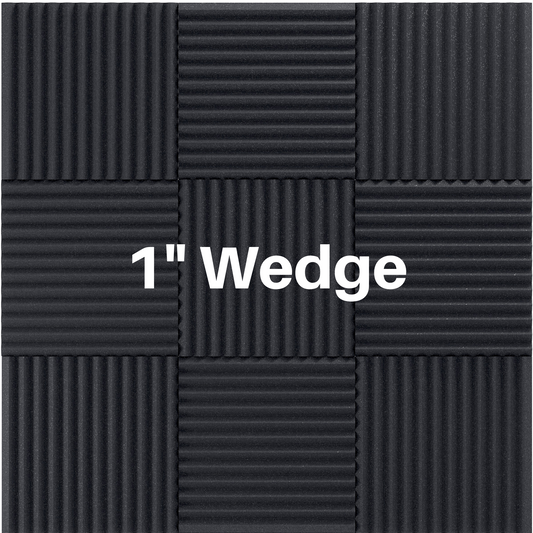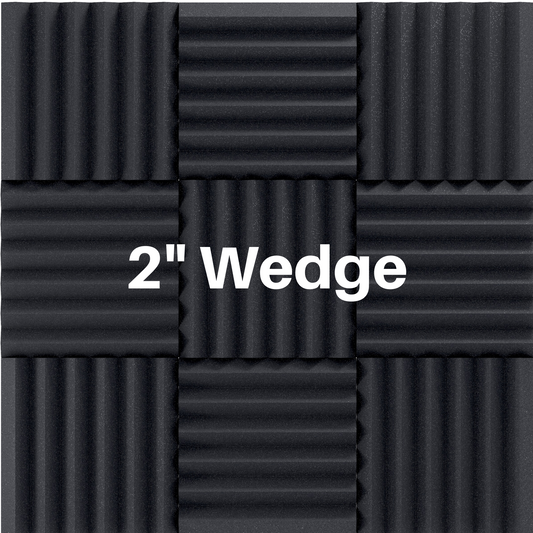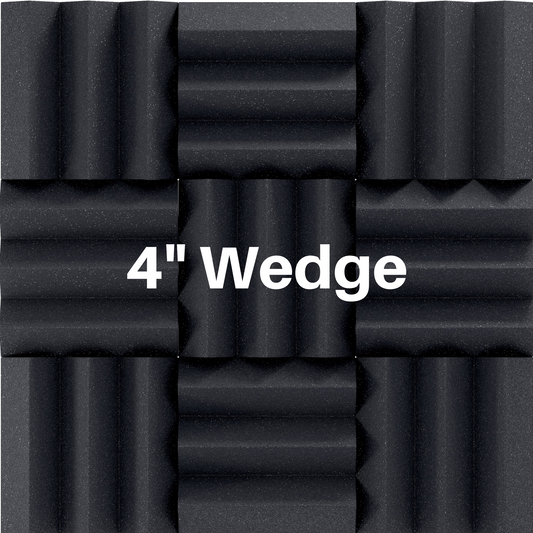What STC Ratings Mean (Sound Transmission Class Definition)
Share
Understanding soundproofing requires understanding Sound Transmission Class (STC) ratings, a measure for assessing how well a material or partition blocks airborne sound.
Whether you’re working on a home studio, office space, or residential project, knowing what these ratings mean can help you make informed decisions.
What is STC?
STC stands for Sound Transmission Class, a standardized system used to measure the effectiveness of a material in blocking sound. Essentially, the higher the STC rating, the better a wall, floor, or ceiling is at isolating sound.

Typical STC Ratings for Common Materials
- Single-pane window: STC 26
- Standard drywall (no insulation): STC 33
- SoundAssured 1 lb Mass Loaded Vinyl (MLV-100): STC 26
- SoundAssured 2 lb Mass Loaded Vinyl (MLV-200): STC 33
Adding Mass Loaded Vinyl helps reduce noise transmission through walls, enhancing overall sound insulation performance.
STC For Wall Assemblies
Common wall assemblies typically include drywall and insulation, and their STC ratings vary based on material combinations and construction techniques.
Below are some example wall construction techniques for soundproofing. 1 lb Mass Loaded Vinyl is shown in addition to simple walls with insulation and without insulation.


| Wall Type | STC Rating | Description |
| Simple Wall | STC 33 |
Basic wall construction with no insulation or added material
|
| Simple Wall + MLV | STC 43 |
Simple wall with Mass Loaded Vinyl layer for soundproofing
|
| Simple Wall with Insulation | STC 36 |
Basic wall with added insulation for improved sound control
|
| Simple Wall with Insulation + MLV | STC 48 |
Insulated wall with MLV for enhanced noise reduction
|
| Adjacent Walls | STC 57 |
Two walls with an air gap in between to absorb sound
|
| Adjacent Walls + MLV | STC 63 |
Adjacent walls with MLV for maximum sound blocking
|
How STC is Calculated
STC is calculated by measuring how well a material reduces sound levels across various frequencies. The process involves testing from low bass to higher treble sounds, and calculating the average noise reduction. The final STC rating is a weighted average of how much sound is blocked over the entire frequency range.
Application of STC
In everyday environments, STC ratings are used to evaluate walls, floors, and ceilings, but they can also be helpful in choosing soundproofing products like Mass Loaded Vinyl (MLV). Here’s what different STC ratings mean for your soundproofing needs:
- STC 25-30: Normal speech can be heard clearly through the barrier.
- STC 30-40: Loud speech can be heard, but not entirely clear.
- STC 40-50: You can hear some muffled sounds, but not specific words.
- STC 50-60: Sound is barely heard, providing solid privacy.
- STC 60+: Excellent sound isolation; very little can be heard.
The Science Of Soundproofing Materials
Soundproofing is about controlling the way sound waves interact with materials, primarily through absorption, reflection, and damping. The effectiveness of a material in soundproofing depends a lot on its cell structure.
A lot of people think that acoustic foam panels are used for soundproofing, but this is not true.
Porous materials like acoustic foam or fiberglass have open-cell structures that allow sound waves to enter and dissipate as heat, reducing sound energy. Porous absorbers like these work by trapping air in their complex matrix of interconnected pores.
Dense materials like Mass Loaded Vinyl (MLV) use their high mass to block sound transmission. The layered structure in some materials also helps by creating barriers that absorb and deflect sound, effectively reducing noise transfer.
| Sound Blocking |
Sound Absorbing
|
|
| Material Type | Dense, Mass-Loaded Materials |
Porous, Fibrous Materials
|
| Primary Purpose | Preventing sound from passing through walls, floors, or ceilings |
Absorbing and dissipating sound waves within a space
|
| Best for | Blocking external noise from entering a room |
Reducing echo and reverb within a room
|
| Example Materials | Mass Loaded Vinyl (MLV), Concrete, Drywall |
Acoustic Foam, Fiberglass Panels, Fabric
|




